Let’s face it: traditional gardening can be time-consuming and labor-intensive. The constant pruning, watering, and fertilizing can quickly become overwhelming, especially for those with busy schedules or little gardening experience. Many aspiring green thumbs often find themselves discouraged from pursuing their gardening dreams due to the perceived complexity and effort required to maintain a beautiful outdoor space.
Luckily, there is a solution: plants that flourish with little care from the home gardener. We have curated a list of the best low maintenance outdoor plants that will transform your gardening experience. With these easy-to-care-for plants, you can enjoy the beauty of nature without sacrificing your precious time and energy. From stunning green foliage to colorful blooms, our selection includes various options for any style or preference.
We recommend using metal planters to enhance the visual appeal of your low maintenance outdoor plants. Not only do they provide a sleek and modern touch to your outdoor decor, but they also offer durability and versatility. With proper drainage and well-draining soil, metal planters ensure the optimal growth conditions for your plants, making them a perfect match for your effortless gardening journey.
Ready to transform your outdoor space into a haven of low maintenance beauty? Don’t wait any longer! Browse our collection of high-quality metal planters and embark on your gardening adventure today. With the perfect combination of low maintenance outdoor plants and stylish metal planters, you can create an inviting and vibrant outdoor oasis that will be the envy of all.

Persian Shield (Strobilanthes dyerianus) is a stunning tropical plant known for its vibrant purple and silver foliage. Its elongated leaves have a metallic sheen that adds a touch of elegance to any outdoor space. Persian Shield thrives in warm, humid climates and is best suited for USDA hardiness zones 10 to 11. It can be grown as an annual in colder regions or as a houseplant.
Different varieties of Persian Shield are available, each with unique leaf patterns and colors. Some popular varieties include ‘Purple Prince’ with deep purple leaves, ‘Mona Lavender’ with purple and green leaves, and ‘Royalty’ with dark purple foliage. Experiment with different varieties to create a visually captivating display of Persian Shield in your outdoor space.
To care for Persian Shield, provide it with partial shade to protect its delicate foliage from scorching sun exposure. Ensure the soil is well-drained and consistently moist, but avoid overwatering to prevent root rot. Regularly misting the leaves or placing the plant near a humidifier can help recreate its preferred humid conditions. Additionally, fertilize Persian Shield with a balanced liquid fertilizer every two to three weeks during the growing season to promote healthy growth.
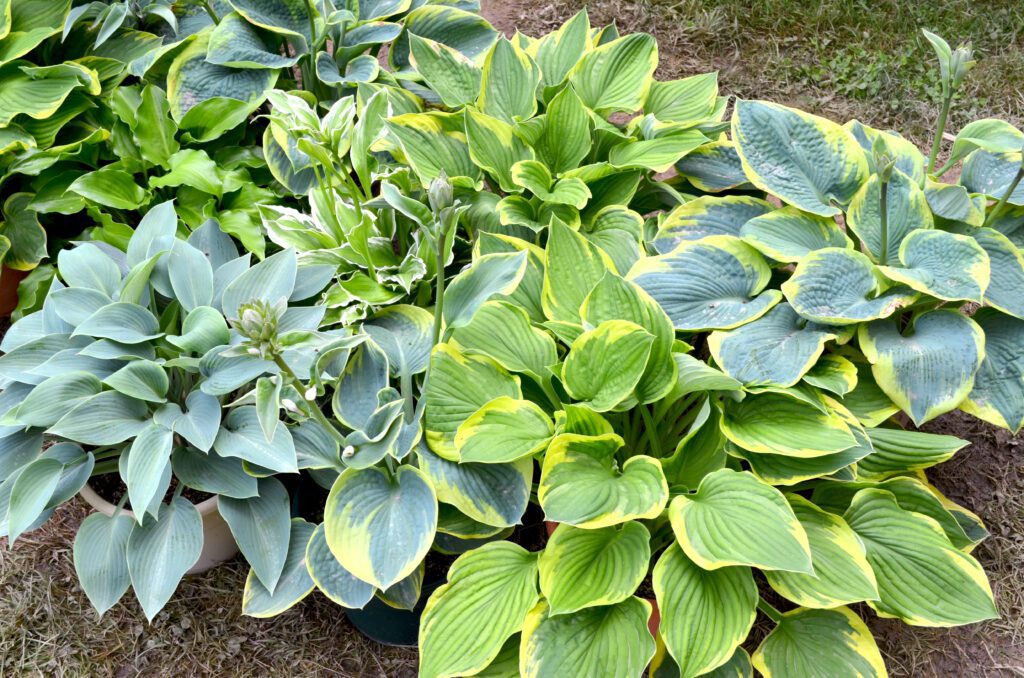
Hostas are versatile and low-maintenance plants that come in various sizes, shapes, and colors. They are characterized by their large, textured leaves that can be green, blue-green, gold, or variegated. Hostas thrive in partial to full shade and are ideal for USDA hardiness zones 3 to 9. They can be grown in various outdoor settings, including gardens, borders, and containers.
Hostas offer a wide range of varieties to choose from, catering to different preferences and garden styles. Some popular varieties include ‘Sum and Substance’ with giant chartreuse leaves, ‘Frances Williams’ with blue-green leaves and yellow margins, and ‘Patriot’ with green leaves and crisp white margins. With their diverse leaf shapes and colors, hostas can add texture and visual interest to your outdoor space while requiring minimal maintenance.
Caring for hostas is relatively easy. Plant them in well-draining soil enriched with organic matter to ensure proper growth. Water them regularly, especially during dry spells, and mulch around the base to retain moisture and suppress weeds. Hostas are generally pest-resistant, but it’s important to watch out for slugs and snails, which can damage the leaves. Applying organic slug repellents or creating barriers can help protect your hostas.
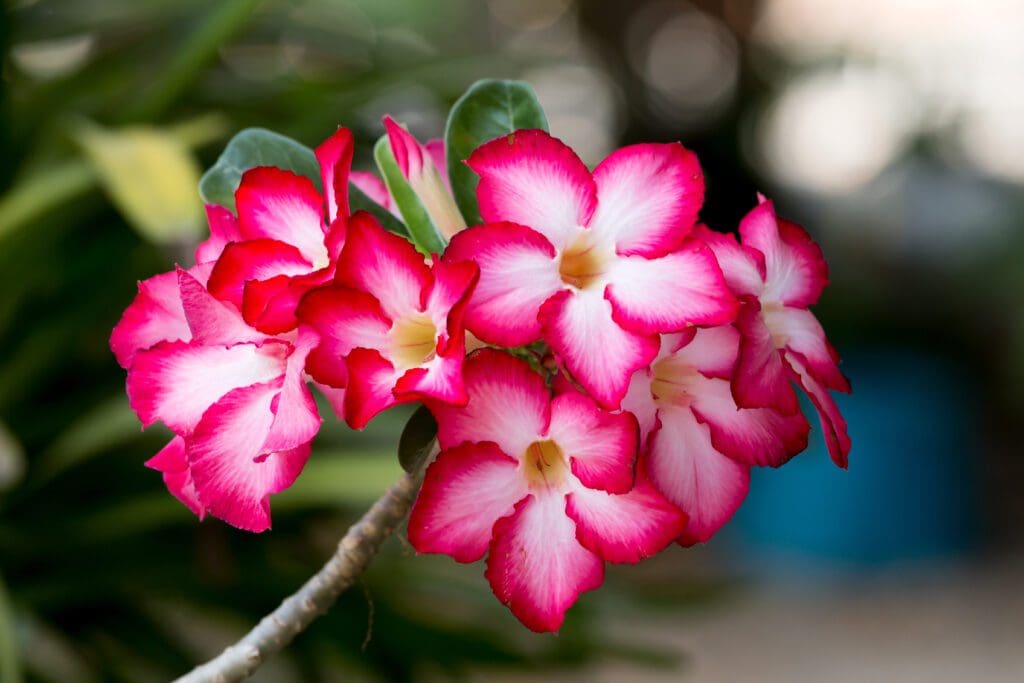
Desert Rose (Adenium obesum) is a unique succulent plant that showcases striking blooms and a thick, swollen trunk. Native to arid regions of Africa and the Arabian Peninsula, this low-maintenance plant is perfect for warm climates and is suitable for USDA hardiness zones 10 to 11. It can be grown as a container plant or in well-drained garden beds.
Desert Rose comes in various colors, including shades of pink, red, and white. Some popular varieties include ‘Black Beauty’ with deep red flowers, ‘Snow White’ with pure white blooms, and ‘Golden Crown’ with yellow petals and red edges. Choosing different varieties can create a captivating display of Desert Rose in your outdoor space, adding an exotic touch to your garden or patio.
When caring for Desert Rose, provide it with plenty of direct sunlight, at least six to eight hours a day. The plant prefers well-draining soil and should be watered sparingly, allowing the soil to dry out between waterings. Overwatering can lead to root rot, so striking a balance is essential. Fertilize Desert Rose during the growing season with a balanced, slow-release fertilizer to support healthy growth and vibrant blooms.
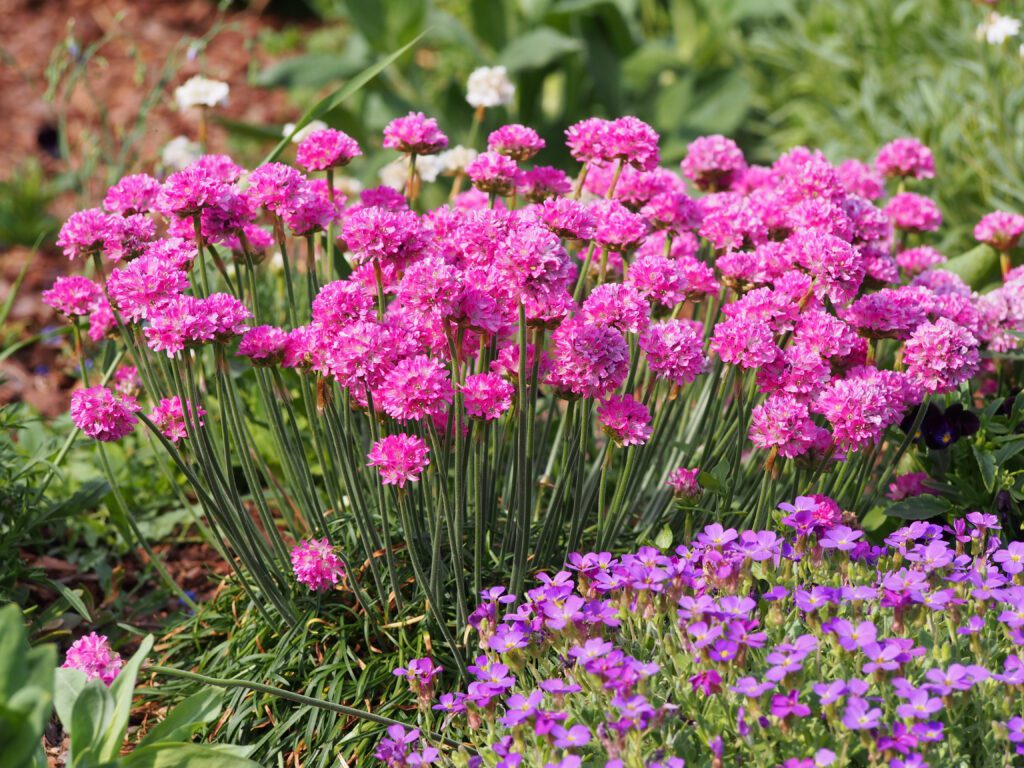
Armeria, commonly known as Sea Thrift, is a tough and resilient plant that thrives in coastal areas and rock gardens. It features grass-like foliage and produces clusters of globe-shaped flowers on tall stems. Armeria is well-suited for various climates and can be grown in USDA hardiness zones 3 to 9.
There are several varieties of Armeria to choose from, offering different flower colors such as pink, white, or purple. Some popular varieties include ‘Laucheana’ with pink flowers, ‘Alba’ with white blooms, and ‘Rubrifolia’ with deep pink flowers and bronze foliage. Incorporating Armeria into your outdoor space adds a pop of color and texture, especially in rock gardens or coastal landscapes.
To care for Armeria, plant it in sandy or well-draining soil with proper drainage. This plant prefers full sun but can tolerate some light shade. Water it regularly, especially during dry spells, but allow the soil to dry out slightly between waterings. Armeria is a relatively low-maintenance plant that doesn’t require much fertilization. However, applying a slow-release balanced fertilizer in early spring can help promote healthy growth and abundant blooms.
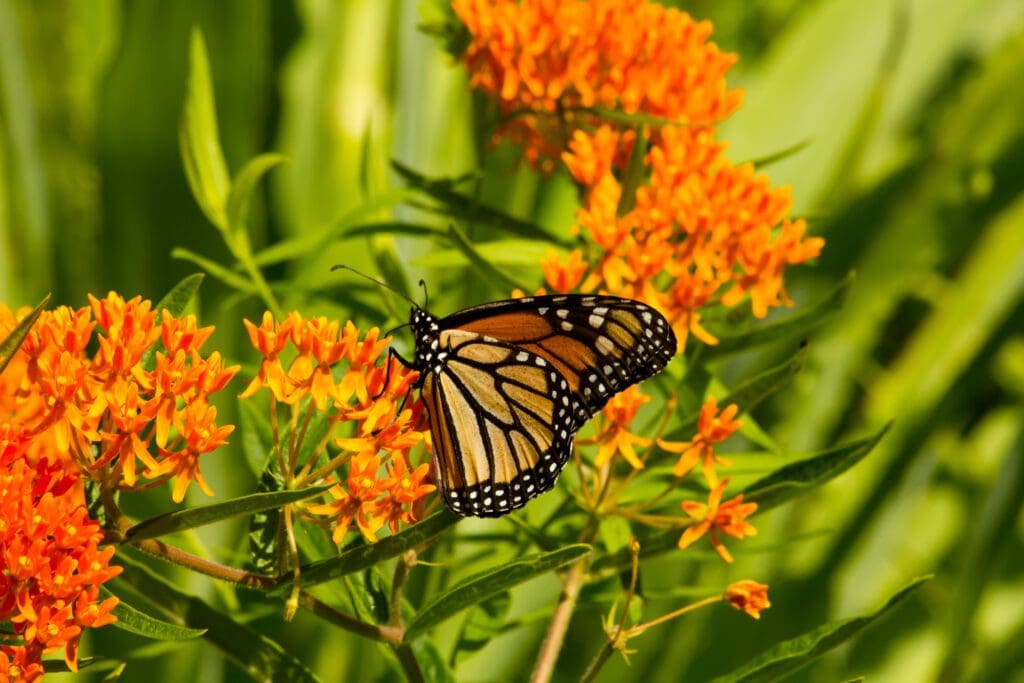
Butterfly Weed (Asclepias tuberosa) is a beautiful perennial plant known for its vibrant orange or yellow flowers. As the name suggests, this plant is lovely to butterflies and serves as a crucial food source for their caterpillars. Butterfly Weed is native to North America and thrives in full sun, making it an excellent addition to USDA hardiness zones 3 to 9 gardens.
Butterfly Weed comes in various cultivars, offering different flower colors like orange, yellow, and red. Some popular varieties include ‘Hello Yellow’ with bright yellow flowers, ‘Gay Butterflies’ with vibrant orange blooms, and ‘Cinderella’ with deep red-orange flowers. By planting Butterfly Weeds in your garden, you add a burst of color and provide a habitat for butterflies, creating a thriving ecosystem in your backyard.
To care for Butterfly Weed, choose a well-draining soil with average fertility. Water the plant regularly to establish a strong root system, especially during the first growing season. Once established, Butterfly Weed is quite drought-tolerant and requires minimal watering. Prune back the plant in early spring to encourage robust growth and remove dead or damaged stems. Avoid excessive fertilization, which can lead to leggy growth and reduced flowering.
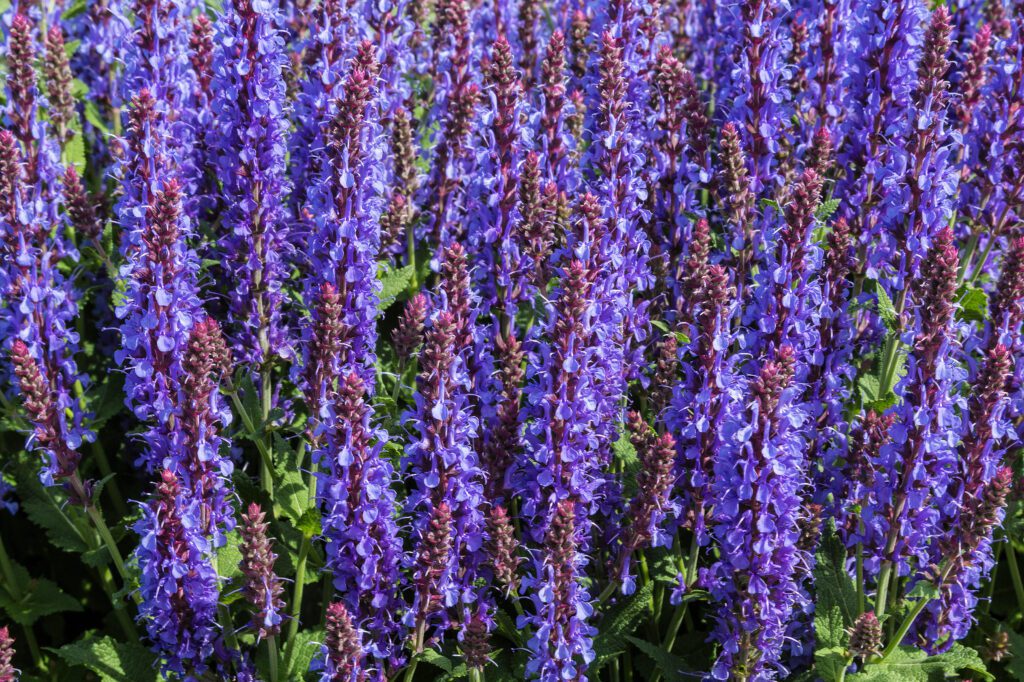
Lilac Sage (Salvia verticillata) is a charming perennial herbaceous plant that produces masses of delicate lilac-colored flowers. With its slender stems and aromatic foliage, Lilac Sage adds a touch of elegance to any garden. This plant is best suited for USDA hardiness zones 4 to 9 and thrives in full sun or partial shade.
Different varieties of Lilac Sage are available, each offering unique flower colors and growth habits. Some popular cultivars include ‘Purple Rain’ with deep purple flowers, ‘Blue Spires’ with vibrant blue-purple blooms, and ‘Pink Dreams’ with soft pink flowers. Incorporating Lilac Sage into your garden lets you enjoy its enchanting blooms and attract pollinators like bees and butterflies, making it an excellent addition to any low-maintenance outdoor space.
When caring for Lilac Sage, provide it with well-draining and moderately fertile soil. Water the plant regularly during the first growing season to establish a strong root system. Once established, Lilac Sage is relatively drought-tolerant and requires minimal watering. Deadhead the faded flowers to encourage continuous blooming and trim back the plant in early spring to maintain its compact shape. Lilac Sage is generally pest-resistant and does not require extensive fertilization.

Ninebark (Physocarpus) is a versatile deciduous shrub known for its attractive foliage and small, white, or pink flower clusters. It gets its name from the peeling bark that reveals layers of different colors, adding visual interest to the plant. Ninebark is suitable for various climates and can be grown in USDA hardiness zones 2 to 8.
Choose a location with well-draining soil and full sun to partial shade to care for Ninebark. This shrub is relatively low-maintenance and can tolerate various soil conditions. Water it regularly, especially during dry spells, and mulch around the base to retain moisture and suppress weeds. Prune Ninebark in late winter or early spring to remove any dead or damaged branches and promote healthy growth.
Several Ninebark varieties are available, offering different leaf colors and sizes. Some popular cultivars include ‘Diabolo’ with deep burgundy foliage, ‘Summer Wine’ with wine-red leaves, and ‘Dart’s Gold’ with golden-yellow foliage. Ninebark’s various colors and textures make it a versatile choice for hedges, borders, or as a focal point in your landscape.
This carefully curated selection of low-maintenance outdoor plants is perfect for creating a beautiful garden with minimal effort. From the vibrant foliage of Persian Shield to the striking blooms of Butterfly Weed, our list includes something for every taste and style.
We encourage you to consider further investing in metal planters to enhance your outdoor oasis. Not only do they provide a sleek and stylish aesthetic, but they also offer durability and longevity, making them the perfect complement to your low-maintenance plants. By shopping now for the best metal planters, you can elevate your garden’s visual appeal while keeping maintenance to a minimum.
Take charge of your outdoor space and embrace the beauty of low-maintenance gardening. With these easy-care plants and the addition of metal planters, you can create a stunning garden that requires less time and effort, allowing you to enjoy the fruits of nature without the hassle.
Resources: